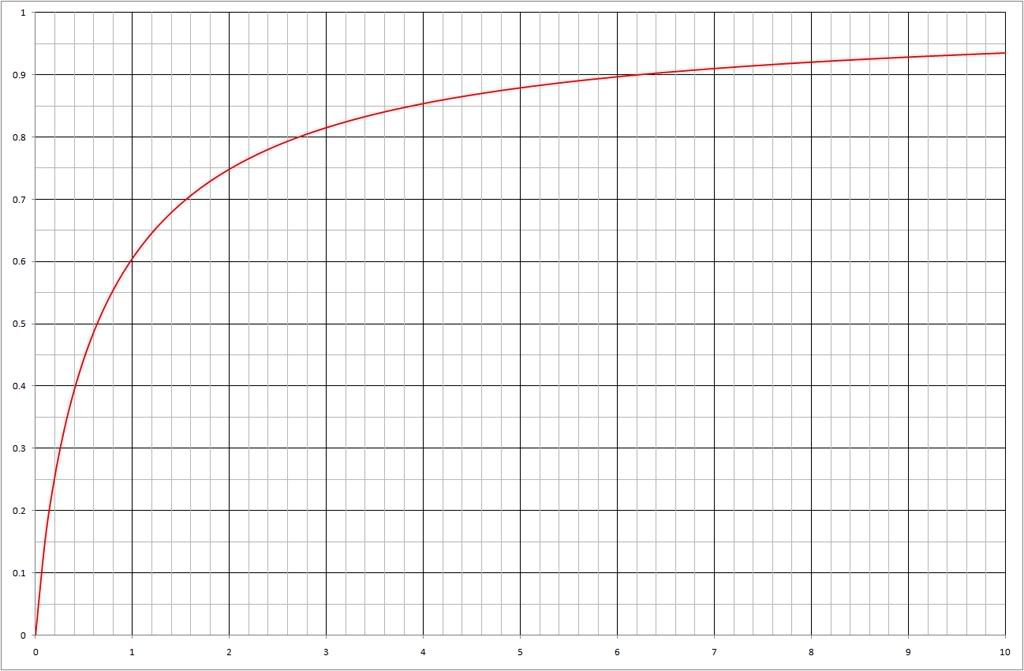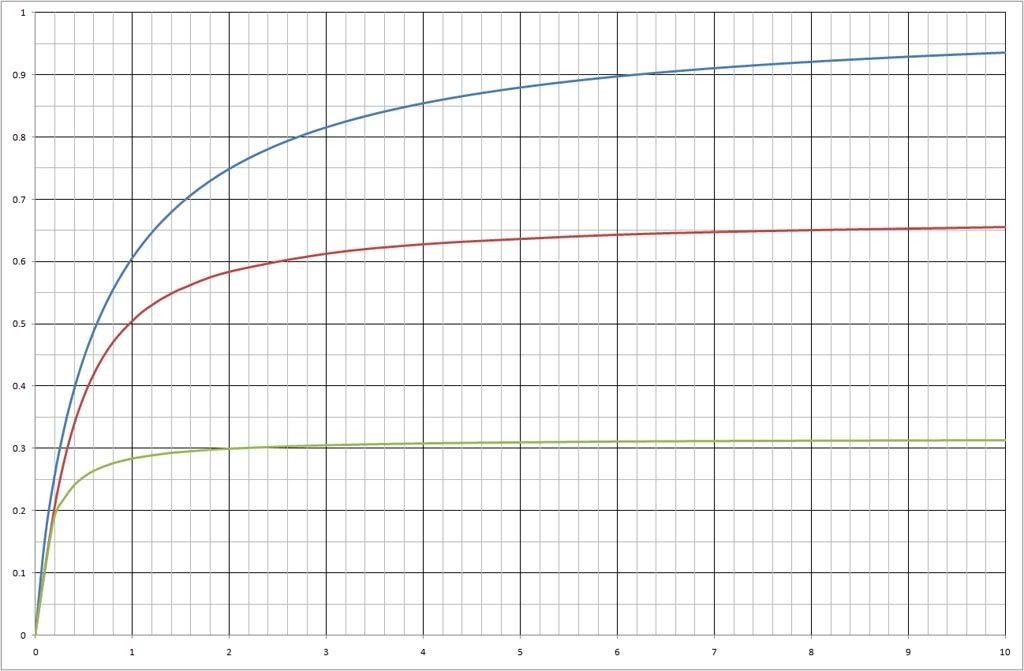spudtyrrant wrote:note he said a manual valve(ball valve) so for it to be as effective as possible he would need a 2:1 C:B ratio(a 1:1 ratio is only for highly efficient valves)
Seriously, where does this misinformation come from?
You're the wrong way around. Only the more efficient valves can actually make (much) use of the extra chamber volume.
The slower valves let so little air through in the time available that a larger chamber volume is pure waste.
D_Hall wrote:But I think everybody agrees that the tipping point is somewhere between a 2:1 chamber/barrel ratio and a 4:1 chamber/barrel ratio.
Not myself. Most of the time, I would suggest 2:1 is at the upper end of what you should use.
A while back, I did a whole load of integrals for C:B ratios. That table is here:

However, the table is misleading, because it assumes perfect valve flow. Without perfect valve flow, an increase in velocity causes loss of efficiency. So, to illustrate this theoretical performance versus real life, I've added two further curves:

The blue one is the theoretical performance.
The maroon one is simulations of HEAL's performance (with appropriate chamber size) using a 20 gram projectile.
The green one is simulations of HEAL's performance with half the valve diameter (to demonstrate the point I make above to spudtyrrant).
The difference between theoretical and actual performance is obvious - lower performance, and those diminishing returns hit sooner.
The difference between a top end valve and what is still a pretty decent valve (it would outstrip a ball valve) is also obvious - lower performance, and those diminishing returns hit sooner.
If I modelled it with an even lesser valve, it would demonstrate a tendency for an even lesser "ideal" C:B ratio.
If we assume that the "ideal" C:B ratio is the one at which the cannon achieves 90% of the energy it could with an infinite C:B ratio, then HEAL has an ideal C:B of about 2.15:1 with its normal valve (For reference, the normal ratio is pretty much 1.5:1). That falls to about 1:1 with the half diameter valve.
My point about lesser valves having lower ideal C:B ratios stands. Ball valve cannons aren't really able to justify a 2:1 C:B ratio over a straight 1:1, because they can't use that extra volume.
Anyway, to get back to the point, I'd normally waver between 0.5:1 and 2:1. It depends on the cannon.

